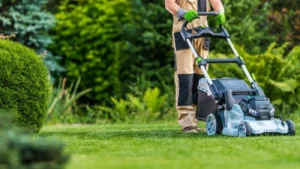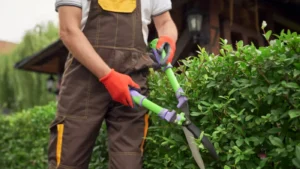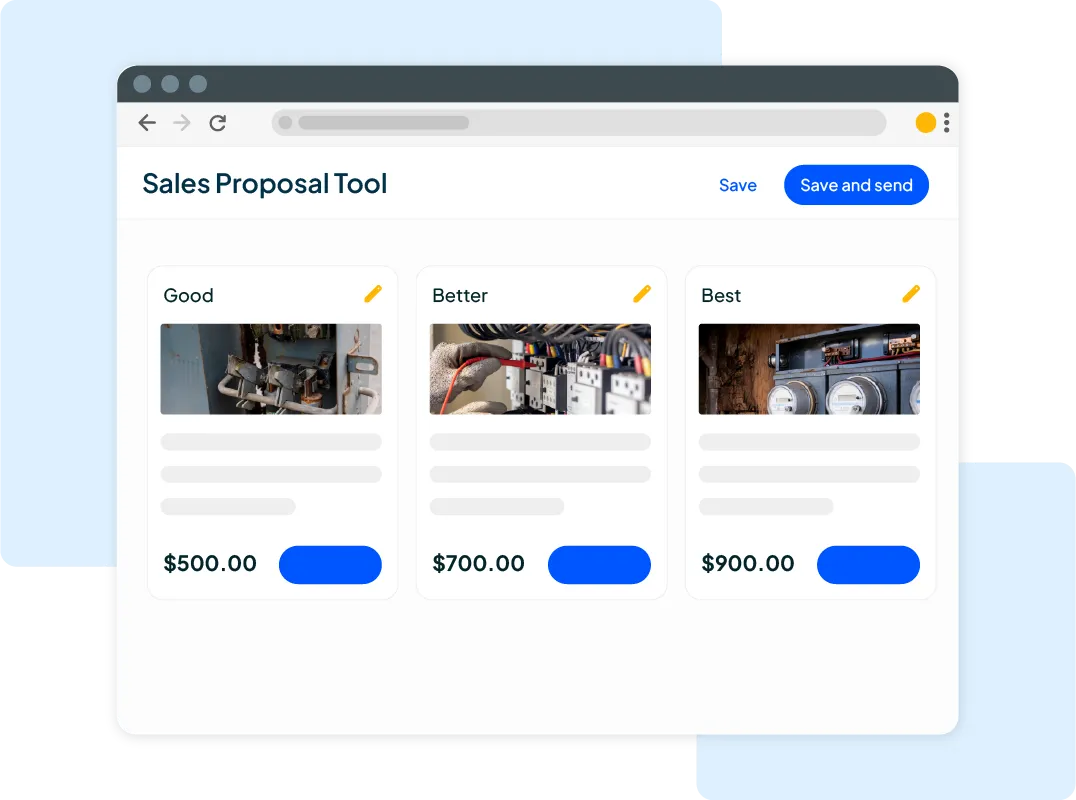Want to win more jobs with less effort?
Grow your business and send quick quotes with our home service software.

Want to see your potential revenue?
See what businesses like yours earn with Housecall Pro in 1 - 2 minutes.

One thing is for certain—there will always be a demand for landscaping services. Grass will continue to grow. Weeds will continue to pop up where homeowners and business owners want them least (though does anyone actually like weeds?). And shrubs will continue to need trimming. That doesn’t even include all those things we do each year such as planting annuals to create some pops of color around our homes and businesses.
So if you have a desire for great landscaping and have the skills to do the job, you can totally be in it to win it and make some money. However, your landscaping business won’t grow on its own, and you can’t rely on past satisfied customers to keep paying it forward with countless referrals.
To grow your business you need to market it effectively. In this article, we will explain everything you need to know about successfully marketing a landscaping business. With these marketing strategies for landscapers, you’ll be sure to come out on top and stay ahead of your competition. Let’s get to it!
Marketing Your Landscaping Business Starts with Identifying Your Ideal Customer

Here’s the thing—so many new business owners try to be everything for anybody. They adopt that can-do attitude with a “yes” to every question. And while this is indeed possible and many landscaping companies take every job that’s offered to them, it can also backfire quickly. You can end up overtaxing yourself or taking on gigs that aren’t in your skillset which can lead to customer disappointment.
So, marketing your landscaping business starts with deciding who your ideal customer is so that you can direct your marketing efforts toward their wants and needs. Here’s what you need to figure out.
- Demographics: Determine age, gender, income level, and location. For example, you may find that you should target homeowners aged 35-55 with a household income of $75,000+ in suburban areas.
- Psychographics: Understand their interests, values, and lifestyle. You may determine you should seek customers who value a well-maintained yard, are environmentally conscious, and enjoy outdoor living.
- Pain Points: Identify their landscaping challenges and needs. For example, homeowners struggling with weed control, needing seasonal yard clean-up, or seeking to increase curb appeal with new plantings.
- Marketing Channels: Find where they spend time online and offline. Keep in mind that the average user spends 143 minutes a day on social media channels. Utilize Facebook and Instagram ads, local community websites, flyers in neighborhood coffee shops, and booths at home improvement fairs.
- Customer Persona: Create detailed personas to guide your marketing efforts. For example, “Suburban Sam,” is a 45-year-old professional with a busy schedule who values a beautiful yard but lacks time for maintenance. He prefers eco-friendly solutions and is active on social media and local community boards.
Develop a Strong Brand Identity
Once you know your target customer, you will want to spend some time working on your brand identity. This is all about what you stand for and the business you want to be. It’s not just about being a landscaping company. It’s about the type of service you want to offer and the experience you want to create for your customers.
Here are the things to do.
- Brand Mission: Define your company’s purpose and values. For example, “Our mission is to create beautiful, sustainable landscapes that enhance the quality of life for our customers while preserving the environment.”
- Visual Identity: Design a memorable logo, color scheme, and typography. You may decide to choose a green and earthy color palette to reflect your commitment to nature, and a clean, modern font to convey professionalism.
- Voice and Tone: Establish a consistent voice that resonates with your audience. For example, use a friendly and approachable tone in all communications to make customers feel valued and understood.
- Unique Selling Proposition (USP): Highlight what sets you apart from competitors. An example could be, “We specialize in eco-friendly landscaping solutions that save water and promote native plant growth, offering unique benefits for environmentally conscious homeowners.”
- Brand Guidelines: While you may not need to do this right away, eventually, you will want to create a document for consistency across all marketing materials. This comprehensive guide will include your logo usage, color schemes, typography, tone of voice, and examples of do’s and don’ts to maintain brand consistency. If this type of work isn’t in your wheelhouse, you can look for a graphic design freelancer to do this for you. The best platform to find this type of talent is typically Upwork or Fiverr.
Optimize Your Local Search Engine Optimization Presence
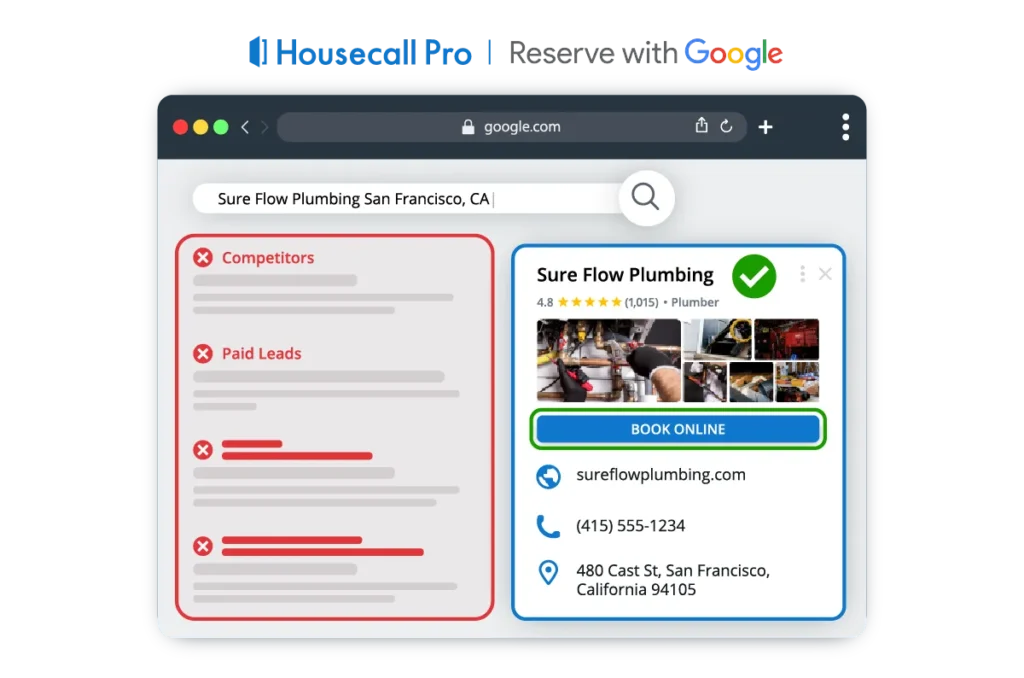
Did you know that 60% of people discover local businesses directly through Google search results, without ever visiting the business’s website? A Google Business Profile (GBP) is a free tool that helps your landscape company show up in local search results, making it easier for potential clients to find you online.
This makes your Google Business Profile (GBP), how your business appears on Google Search and Maps, one of your most valuable landscaping marketing strategies.
We can’t emphasize this step enough. If you want people in your area to find you, you need to have a presence on Google, and your Google Business Profile is where to start.
You should focus on optimizing these key areas:
- Complete Information: Make sure your profile has accurate and up-to-date NAP (name, address, phone number) information.
- Categories and Services: Select your most relevant relevant categories and list all your services.
- Photos and Videos: Upload high-quality images and videos of your landscaping work.
- Customer Reviews: Encourage satisfied clients to leave positive reviews. Respond to reviews, both positive and constructive, to make review management a key part of your landscaping business marketing strategy.
- Google Posts: Regularly update with promotions, events, and news.
- Local Directories: Get your business listed in these landscaping directory websites to increase visibility and drive traffic.
Build a Professional Landscaping Website
Considering that 97% of people learn more about a local company online than anywhere else, it’s clear that appearing in Google search is crucial for influencing purchasing decisions. Many landscapers want to go big with social media right off the bat. But before you do that, make sure you have a strong landscaping business website. Gone are the days when people turned to that big yellow book—the Yellow Pages—to find the needed service providers. Today, they search the internet for landscaping companies near me.
So, if your Google Business Profile is up to date, it will pop up for the customer. And, even better, your website will come up too at the top of search engine results pages, and customers can click over to your website for a list of services that you have to offer.
Here’s what to do.
- Responsive Design: Make sure your website is mobile-friendly and easy to navigate. Many users will be accessing your site from their smartphones, so it needs to look great and function well on all devices.
- Portfolio: Showcase your best work with high-quality images and detailed descriptions. Include before-and-after photos to highlight the transformations you can achieve.
- Service Pages: Create individual pages for each of your services. This helps with SEO and makes it easy for potential customers to find exactly what they need.
- On-Page SEO: Optimize your website for local search engine optimization by including location-specific keywords and creating a dedicated page for each service area.
- Blog: Write informative blog articles on landscaping tips and trends. Regularly updating your blog with useful content can help drive traffic to your site and position you as an expert in your field.
- Contact Forms: Make it easy for visitors to contact you or request a quote and don’t underestimate the power of online booking options. Use simple forms that capture essential information and make sure they are prominently displayed on your site.
- Testimonials and Reviews: Display customer testimonials and reviews prominently. Positive feedback builds trust and can significantly influence potential clients’ purchasing decisions.
- Clear Calls-to-Action (CTAs): Use compelling and clear calls-to-action throughout your site. Whether it’s to request a quote, schedule a consultation, or call your business, effective CTAs guide visitors toward taking the next step.
Post Organic Content on Social Media
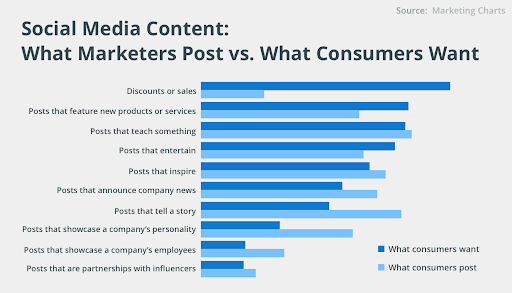
We mentioned earlier that today’s digital consumers spend a lot of time online. In 2024, Facebook alone has 3.07 million users, followed by YouTube with 2.5 billion users. So, a social media strategy needs to be front and center in your approach to marketing. It’s a strategy to pursue once that website is set up.
- Content Calendar: Plan and schedule posts to maintain consistency.
- Engaging Visuals: Use high-quality images and videos of your projects.
- Educational Posts: Share landscaping tips, how-tos, and industry news.
- Behind the Scenes: Give followers a glimpse of your team and daily operations.
- Engagement: Respond to comments and messages promptly to build relationships.
Make sure each post directs customers back to your website to learn more about your services.
Raise Awareness with Facebook Ads
Next up on the list of marketing ideas for your landscaping business is to try your hand at Facebook ads. Remember those 3.07 million users? Well, they’re on Facebook everyday and are heavily influenced by what they see on the platform. So, if you have a presence where they spend their time, you are far more likely to drive some new landscaping gigs than if you are invisible.
Here’s what to do.
- Targeted Campaigns: Use Facebook’s targeting options to reach your ideal customers by demographics, interests, and behaviors.
- Compelling Visuals: Create eye-catching ads with strong visuals and clear messages that highlight your best work.
- Special Offers: Promote discounts or special packages to attract new customers and encourage quick responses.
- Ad Variations: Test different ad creatives and copy to see what resonates best with your audience.
- Analytics: Monitor performance and adjust your strategy based on data to optimize results.
If this feels overwhelming, you can turn to third parties to help. Consider companies like Kraken Ads who specialize in Facebook and social media advertising.
Support Community Events in Your Area
People love to do business with companies who support their local communities. So make sure you have a local presence that gives back to the area that you serve. Here are some of the things you can do.
- Sponsorships: Sponsor local events such as school sports teams, community festivals, or charity runs to increase visibility and goodwill. Booths and Demos: Set up booths or give demonstrations at community fairs and farmer’s markets to showcase your services and engage with potential customers directly.
- Donations: Donate services or products for charity events and raffles, like offering free landscaping services for a season or a garden makeover. As an additional idea, consider offering free landscaping services for one year to a local family in need or for another local business that does great things for the community.
- Collaborations: Partner with local organizations to co-host events, such as tree-planting drives with environmental groups or garden workshops with local nurseries.
- Local Media: Submit press releases or participate in interviews about your community involvement to get coverage in local newspapers, online community boards, and radio stations.
Send Direct Mail Postcards
Whoever said direct mail was dead was missing the mark. The truth is that direct mail still works and in a big way. Advertisers in the U.S. are spending $39.36 billion per year on direct mail advertising alone. You should, too, as it helps get in front of customers who are less digitally savvy and may need your services. Plus, great direct mail pieces can be highly memorable.
Here’s what to do to get the most out of your direct mail campaigns.
- Design: Create visually appealing postcards with high-quality images of your landscaping work, a clear call to action, and your contact information prominently displayed.
- Mailing List: Use a targeted mailing list to reach potential customers in your service area, focusing on homeowners likely to need landscaping services.
- Timing: Send postcards during peak landscaping seasons, such as early spring and late summer, when homeowners are most likely to be thinking about their yards.
- Follow-Up: Include a trackable offer, like a discount code or a free consultation, to measure response rates and understand the effectiveness of your campaign.
- Consistency: Regularly send postcards, such as monthly or quarterly, to keep your business top-of-mind and remind potential customers of your services.
Network with Complementary Local Businesses
We know that you can be busy as a landscape contractor, often working from sunup to sundown, especially during the spring and summer months. But we still encourage you to find a way to make networking a part of your workweek. Here are some ideas on how networking can help you market your landscaping business better.
- Partnerships: Partner with businesses like nurseries, garden centers, and home improvement stores. For example, you can collaborate on special promotions or offer exclusive discounts to each other’s customers.
- Cross-Promotions: Promote each other’s services to expand your reach. You can leave your business cards and flyers at partner locations, and they can do the same at your business. This way, both businesses can benefit from increased visibility.
- Referrals: Create a referral program to incentivize partners to recommend your services. Offer a commission or discount for every new customer they refer to you. This motivates your partners to promote your landscaping business actively.
- Joint Events: Host workshops or events together to attract new customers. For example, you could co-host a gardening workshop with a local nursery, where you provide landscaping tips, and the nursery offers plant care advice. This can draw in customers interested in both services.
- Business Associations: Join local business associations and attend networking events. These associations often have regular meetings and events where you can connect with other local business owners, share ideas, and build valuable relationships that can lead to new business opportunities.
Get In Touch: 858-842-5746
Let us earn your trust
On average, Pros increase monthly revenue generated through Housecall Pro by more than 35% after their first year.
See plan options and feature breakdown on our pricing page.
Post Yard Signs in High-Traffic Areas
Have you ever driven through a neighborhood and noticed yard signs from contractors who have done work in the area? This approach can work for your landscaping business, too. Here’s what to do.
- Permits: Get the necessary permits to place signs. Check local regulations to avoid fines or having your signs removed.
- Visibility: Place signs in locations with high foot and vehicle traffic. Busy intersections, popular community areas, and near your recent projects are ideal spots.
- Design: Use bold colors and clear text to grab attention. Make sure your business name, logo, and key message are easily readable from a distance.
- Contact Information: Include your phone number and website for easy contact. Make it simple for potential customers to reach out to you for more information.
- Client Permission: Ask satisfied customers if you can place signs on their properties. This will not only increase your visibility but also serve as a testimonial to your quality work.
Run Google Local Service Ads
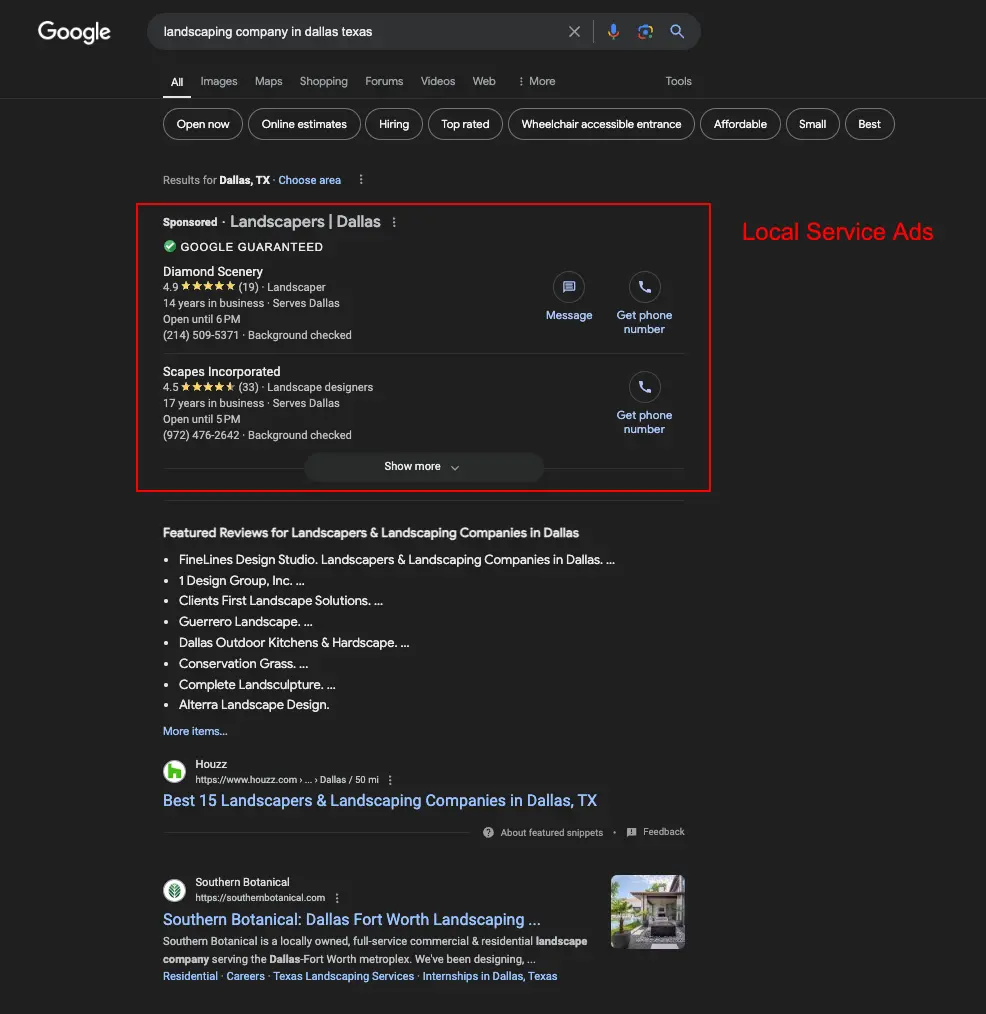
If you are doing all the things we have shared so far, your landscaping business is inevitably starting to grow. But, we’re not done. There are still other things you can do as part of your marketing plan for your landscaping business.
One of those things is Google Local Service Ads (LSA).
Google LSA helps businesses get more leads from search results by showing their ads at the very top of Google search pages when people search for specific services in their area. These ads are highly visible and include a “Google Guaranteed” badge, which adds credibility and trust for potential customers. For landscaping businesses, LSAs can drive more qualified leads directly to your business by making it easy for customers to find and contact you.
Here’s how to make the most of Google LSA:
- Identify Relevant Keywords: Use tools like Google Keyword Planner to find keywords potential customers might search for, such as “landscaping services near me,” “lawn care,” or “garden design.”
- Negative Keywords: Set negative keywords to avoid irrelevant traffic and save budget, like “DIY landscaping” or “landscaping jobs.”
- Compelling Headlines: Write attention-grabbing headlines that include your primary keywords. Example: “Top-Rated Landscaping Services in [City].”
- Clear Call to Action (CTA): Use strong CTAs like “Get a Free Quote,” “Book Now,” or “Schedule Your Consultation.”
- Local Focus: Target your ads to specific geographic areas where you offer services. Focus on your city, nearby towns, and specific neighborhoods. Use site links, call extensions, and location extensions to improve your ad quality.
Housecall Pro now integrates with Google LSA’s giving your landscaping company the power to appear at the top of Google’s search results. Drive more leads, phone calls and messages directly from the worlds most powerful search engine.
Learn more: Housecall Pro’s and Google Local Service Ads integration.
Build an Email List with Lead Magnets
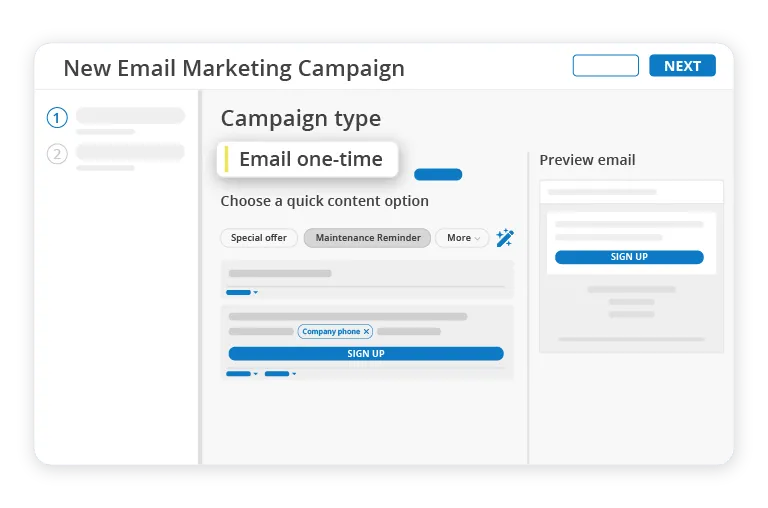
Lead magnets are valuable resources you offer for free in exchange for a potential customer’s email address. They help you build an email list, allowing you to market your services directly to interested prospects.
For a landscaping business, relevant lead magnets could include downloadable guides on seasonal lawn care, checklists for preparing your garden for summer, or design ideas for outdoor spaces.
Here’s what to do:
- Free Guides: Offer downloadable guides or checklists in exchange for email addresses. For example, “10 Essential Tips for a Beautiful Spring Garden.” If writing isn’t your forte or time doesn’t permit, you can find excellent freelance writers on Upwork or Fiverr.
- Exclusive Offers: Provide special discounts or promotions for email subscribers. For example, “Sign up and get 15% off your first landscaping service.”
- Newsletter: Send regular newsletters with helpful content and updates. Include tips, project highlights, and seasonal reminders.
- Segmentation: Segment your list to send targeted and relevant emails. Group subscribers by interests, location, or past interactions to make your emails more personalized.
- Automation: Use email marketing software like Mailchimp to automate follow-ups and nurture leads. Set up a series of emails to introduce your services, share success stories, and remind them of seasonal offers.
Wrap Your Work Vehicles with Your Landscaping Company Branding
Surely, you’ve seen vehicles driving around your community, adorned with brightly colored wraps to promote their businesses. You can do this too, either with side stickers or with a full wrap. This is a great way to catch the eye of potential customers who need the very landscaping services your company has to offer.
Sound interesting? Here’s what to do.
- Professional Design: Hire a professional to design a vehicle wrap that stands out. A well-designed wrap will be eye-catching and effectively communicate your brand message.
- Contact Information: Include your phone number, website, and social media handles. Make it easy for potential customers to contact you immediately upon seeing your vehicle.
- Consistency: Make sure the design matches your overall branding. Use the same colors, fonts, and logos as your other marketing materials to maintain a cohesive brand image.
- Maintenance: Keep your vehicles clean and the wrap in good condition. Regular washing and prompt repair of damage will keep your branding sharp and professional.
- Visibility: Park your vehicles in high-traffic areas when not in use. Strategic parking can serve as free advertising, reaching a wide audience without extra effort.
Print Business Cards
We know, we know—there are many mixed opinions about the usefulness of business cards. And the truth is, they aren’t as popular as they used to be. However, business cards are inexpensive to produce and are a good thing to have on hand. You never know who you might have a conversation with, only to find they have been looking for a good landscaper.
- Quality Materials: Use high-quality paper and printing for a professional look. We recommend a heavier cardstock, 14 – 16 points, to prevent damage and provide that premium feel. Your local FedEx office can often help you design and print your business cards for an inexpensive price.
- Design: Include your logo, contact information, and a brief list of services. A clean and visually appealing design will make a lasting impression.
- Networking: Hand out business cards at events, meetings, and to potential customers. Always carry a few with you; you never know when an opportunity might arise.
- Referrals: Give extra cards to satisfied customers to pass on to friends and family. Personal recommendations paired with your contact information can be very powerful.
- Consistency: Make sure your business cards match your overall branding. Use the same colors, fonts, and logos as your other marketing materials to maintain a cohesive brand image.
Word of Mouth and Referrals
Word of mouth can go a long way in helping to market your landscaping business. HubSpot suggests that 55% of consumers learn about products and services from others. That’s a pretty impressive statistic.
Here’s what to do.
- Ask for Reviews: Encourage satisfied customers to leave reviews online. Platforms like Google, Yelp, and Facebook are great places for positive reviews that can attract new clients.
- Referral Program: Create a program to reward customers who refer new clients. Offer discounts, free services, or other incentives to motivate your current customers to spread the word.
- Testimonials: Collect and display testimonials and marketing materials on your website. Real-life success stories and positive feedback can build trust and credibility with potential customers.
- Customer Service: Provide exceptional service to encourage word-of-mouth referrals. Going above and beyond for your clients will make them more likely to recommend your services to others.
- Follow-Up: Stay in touch with past customers to maintain relationships and encourage referrals. Regular follow-ups, whether through email, phone calls, or holiday cards, keep your business top-of-mind and show that you value their patronage.
Grow Your Landscape Company with Business Software
Last but so very much not least, let’s talk about how technology can make or break your landscaping business. While many small business owners of the past relied on manual approaches to scheduling, invoices, and even paying their employees, this is a relatively poor practice today.
Technology such as landscaping business software is changing the game. It can make you more productive in the back office so you can spend more of your time creating beautiful landscapes for your customers. Plus, you can leverage software to help with your marketing campaigns, even automating them so you never miss an opportunity.
Sound interesting to you? Get started with Housecall Pro’s free 14-day trial today.





